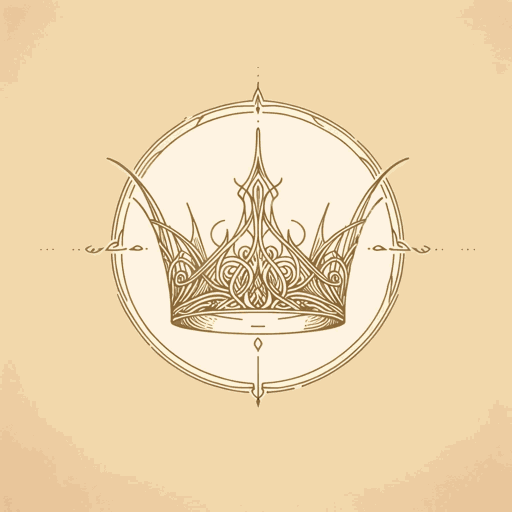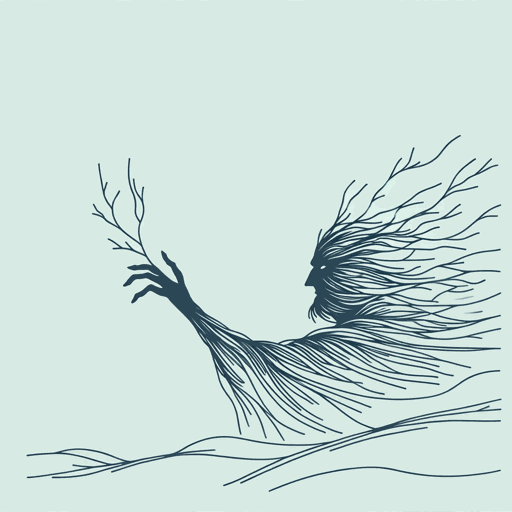30 pages • 1 hour read
J. R. R. TolkienLeaf by Niggle
Fiction | Short Story | Adult | Published in 1945A modern alternative to SparkNotes and CliffsNotes, SuperSummary offers high-quality Study Guides with detailed chapter summaries and analysis of major themes, characters, and more.
Summary and Study Guide
Summary: “Leaf by Niggle”
J. R. R. Tolkien’s short story “Leaf by Niggle” is one of his lesser-known works when compared to other writings such as The Hobbit (1937) or The Lord of the Rings (1954) trilogy. However, “Leaf by Niggle” showcases many of the stylistic and thematic elements that define Tolkien’s other work, including Catholic symbolism, art and nature appreciation, and musings about the meaning of friendship and life. “Leaf by Niggle” depicts the journey of one man through life and what is implied to be the afterlife. This story, published in 1945 at the height of World War II, poses questions about moral responsibility but also urges acceptance of the transience of human life. Citations in this guide refer to the copy of the short story included in The Tolkien Reader, which was published by Ballantine Books in 1966.
The story “Leaf by Niggle” begins with the narrator carefully introducing the reader to the main protagonist, Niggle, a humble man who enjoys painting (though he is not very good at it) and solitude. Niggle is currently working on a painting of a very large tree with many branches and leaves, and this is what occupies him each day. The reader quickly learns that Niggle is preparing for a long journey, though he has yet to find out when this journey will take place or where he will be going. Niggle’s primary worry is that he must finish his painting before he embarks on this grand journey, wherever it may lead him.
Niggle’s painting, located in the shed at the back of his house, is of a large tree with sprawling branches and leaves that seem to have no end in sight. The more leaves and branches Niggle adds to his picture, the more it seems to need. As a result, Niggle finds much of his time devoted to perfecting his tree, with his imagination continually adding new branches and leaves every day.
Niggle lives alone in the quiet countryside; he has no significant other and lives alone. One day, Niggle’s neighbor, Mr. Parish, comes to ask for a favor. His wife is ill, most likely because a most recent storm caused significant damage to their house, thus giving her a chill and making her sick. At first, Mr. Parish asks if Niggle has any tarp or canvas to repair his roof. The only canvas Niggle has is the one used for his painting, so Niggle replies that he has no canvas. Mr. Parish also has an injury in one leg that makes walking difficult, so he asks Niggle to go for a doctor (for his wife) and for the builders (to repair the house) if he has no canvas to spare. Niggle pauses before answering, as he knows this errand will put him further behind finishing his painting. Nevertheless, Niggle agrees to the errand and sets out on his bicycle.
Upon returning from the errand, another large storm hits the countryside, leaving Niggle very ill and in his bed for days. As he recovers from sickness, he curses Mr. Parish for asking him to perform such an errand when he was in the middle of trying to finish his picture, especially on such a tight deadline. Eventually, Niggle finally feels well enough to continue painting; yet just as soon as he climbs up the ladder to add more paint to the canvas, the Inspector of Houses arrives for a visit. He tells Niggle that his neighbor’s house is not satisfactory enough, and that Niggle should have given him the canvas to fix his roof. He then points to the large painting and states, “Houses come first. That is the law” (103). A tall man dressed all in black then enters the doorway and prompts Niggle to get his belongings together. He is here to take Niggle on his journey.
Niggle’s journey is not easy. He loses all his belongings at the train station and is then sent to a work camp with nothing. He is forced to work every day with little food and rest. Niggle falls ill again, and this time he wakes up in an infirmary, where he can hear two voices talking near him. The voices are discussing where he should go next; during their conversation, they review all the deeds Niggle has done and left undone. After reviewing his bicycle ride to help Parish, Niggle’s last genuine sacrifice, the Second Voice announces, “I think it is a case for a little gentle treatment now” (101).
Niggle then takes another journey to a vast green field with many trees, mountains, and colorful flowers. In the center of the field is his tree from the painting. The tree is exactly how Niggle envisioned it. He takes a seat underneath his tree and says, “What I need is Parish” (105). Not long after, Niggle spots Mr. Parish walking toward him in the field. Despite their past differences, the two work together to build a house. In the process, they realize that their lives are richer with the other in it. Niggle realizes that Mr. Parish has much wisdom about houses and gardening, and Mr. Parish starts to recognize Niggle’s artistic ability and creativity.
One fine day after the house is fully constructed, Mr. Parish and Niggle go for a walk. Along the way, they spot a Shepherd standing along the path. As they approach, the Shepherd asks if they are ready to go to the mountains. Niggle accepts the invitation. Mr. Parish, however, stays behind to wait for his wife. The friends part, knowing that someday they will see each other again.
Back in the countryside, people talk about silly Niggle and how he wasted so much time on his painting when he should have tended to other, more productive tasks. Councilor Tompkins disparages Niggle’s art as old-fashioned and useless, but a teacher named Atkins is struck by the beauty of a fragment of Niggle’s canvas and has it displayed in the town’s museum under the title “Leaf: by Niggle.” Eventually, the last worldly trace of Niggle and his art disappears when the museum burns down. That is of no consequence to Niggle, of course, as he has already left on his long journey.
The story closes with the First Voice and Second Voice discussing the merits of the landscape that Niggle and Parish cultivated together. The tree and its surroundings are known as Niggle’s Parish, and the place helps travelers transition from the workhouse to the mountains. When Niggle and Parish are informed of the place’s name, the mountains echo with their laughter.
Related Titles
By J. R. R. Tolkien

Farmer Giles of Ham
J. R. R. Tolkien

On Fairy-Stories
J. R. R. Tolkien

Return of the King
J. R. R. Tolkien

The Children of Húrin
J. R. R. Tolkien

The Fellowship of the Ring
J. R. R. Tolkien

The Hobbit
J. R. R. Tolkien

The Silmarillion
J. R. R. Tolkien

The Two Towers
J. R. R. Tolkien

